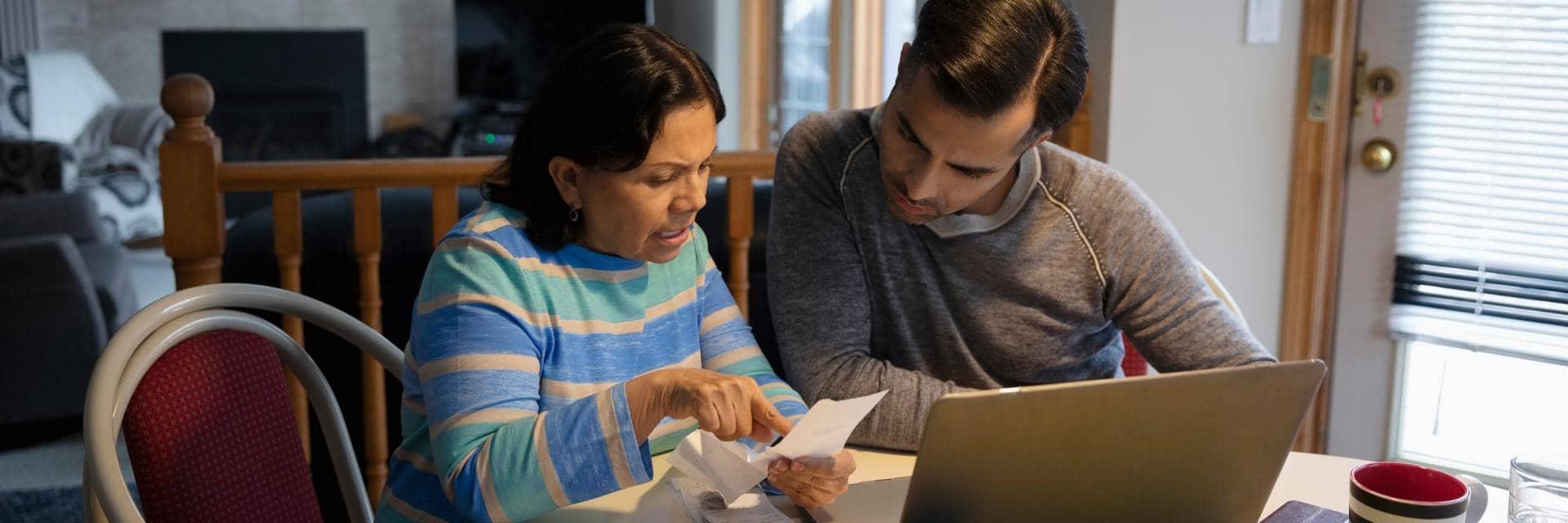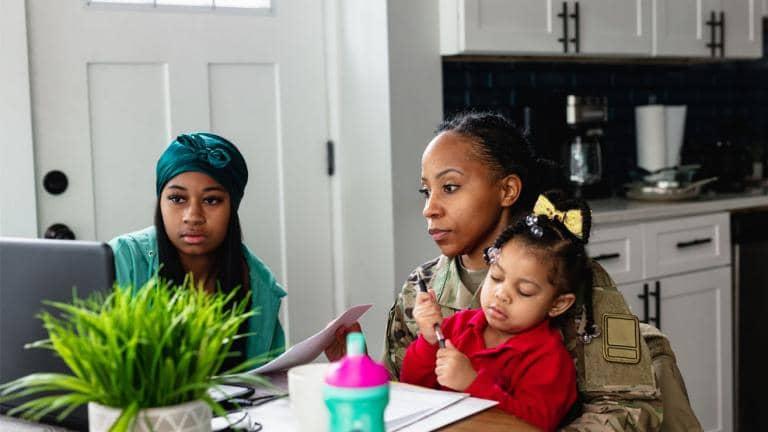
Managing your money
Getting your budget back on track

Six steps to help you look after your money
Think ‘budget’ and you might imagine cutting back, a stack of bills and a need to balance the books. But a budget can also mean a longed-for holiday, a new car, more money in your pocket and being able to sleep more easily at night. It plays such a vital part in the way we look after our money, so the way we think about it matters too. In a nutshell, a budget simply helps you keep track of what’s coming into – and what’s going out of – your bank account. And with rising prices and bigger household bills, now could be a good time to take a fresh look at your personal finances.
Here’s where making a budget could really help – and it could be a lot easier than you think.
Now admittedly, it’s not the most thrilling way to spend a few hours. But discovering where every bit of your money goes can bring huge benefits. It can help you feel more in control, give you peace of mind and even encourage you to save for the future. If you haven’t tried it before, there’s usually more than a few financial surprises – and often an eye-opener or two.
Get started with our six tips below which show you the key basics of budgeting. Whether you’re an ace with apps, a spreadsheet whizz or prefer old-fashioned pen and paper, it doesn’t matter how you do it – pick whatever works for you.
1. What do you take home every month? Put down a precise number
Every budget starts with this figure – how much money you get each month. Of course, most know how much they earn in a year but it’s your monthly take-home figure after tax that really counts. Include any benefits or tax credits, pension or savings income and – if you have shares – dividends too.
If you’re self-employed or part-time, it’s not always so easy to calculate. Take an average, or a rough range into which your income falls into each month. If it all feels like hard work already, you’re not alone. Getting started is always the trickiest bit – especially if you don’t have the details immediately to hand. But it’ll be worth the effort. If you’re struggling to stay motivated, try to visualise what budgeting could do for you. It could take away some of life’s stresses, and help you spend money without feeling guilty.
Really pushed for time? Don’t feel you need to thrash it all out in one go. Try giving yourself 20 minutes a day to work on it – after a week, you’ll be surprised at how much progress you can make.
2. How much do you spend monthly? Be as accurate as you can
It’s crunch time – find out exactly where your money’s going. Some like to print out bank statements and go through them line by line with a highlighter pen. Others prefer apps that detail your ins and outs, and do the hard work for you. Either way, do double-check your spending because it’ll help to be as precise as possible.
As a rule of thumb, go through the last two or three months of your current account to spot trends and patterns. These will likely include online subscriptions, eating out receipts, travel, impulse buys, supermarket bills, clothes, bills, rent (or mortgage), sports, personal treats – the list can be very long, to say the least! This is the task which will take up most of your time. But you’ll get the best out of your budget if you’re willing to put the work in now.
Don’t be surprised if you stumble across bills for items you didn’t realise you were still paying for – forgotten sports club memberships and old magazine subscriptions are common finds for many. Soon enough, you’ll see whether you’re spending more than you earn. This is a light-bulb moment for many people, and you might be surprised by the answer. Got money left over? You’re doing well and it might be worth exploring more savings options. But if you’re regularly spending a lot more than you earn, the next budgeting steps could really help you.
3. ‘Needs vs wants’ – work out what you can go without
With the two totals in front of you, you need to figure out what is – and what isn’t – your essential spending. Mortgage, rent, insurance, groceries and utility bills are all ‘needs’ you can’t go without. However, while they’d all initially be difficult to cut back, you could look for better deals in future – for example, the supermarket shop and insurance costs could be trimmed, depending on circumstances.
But the real change can come from cutting back on ‘wants’. This is money typically spent on eating out, fitness, entertainment and clothes. You could probably find some easier money-saving wins here as it’s easier to make quick decisions – impose spending limits, cut up cards – that have an immediate impact on your wallet.
It’s often the case that seeing all your spending in black and white can help you be honest about the treats you really don’t need. At this point, it’s worth a reminder that budgeting is meant to make your life better!
If giving up family meals out, your music subscription or your gym membership would make you miserable, don’t do it. Your budget should help you see where else you can cut back. Then you can keep doing the things you love while living within your means.
4. Why it pays to pay off debts with savings
If you’ve got both debts and savings, you might not like the idea of paying off one with the other. It can feel like you’re losing a layer of protection, and no one likes to say goodbye to savings. But although it’s a tough decision, it can make a lot of financial sense.
That’s because – in most cases – the cost of your debt is much more than the interest you earn on your savings. Say you’re earning 1% interest on savings of £1,000. At the same time, you’re paying 18% interest on a £1,000 credit card. Pay off the card in full and you’re immediately £170 better off.
5. See if you can set goals with a simple budgeting rule
Now you’ve got a really good picture of what’s coming in and going out, and you’ve figured out where you can save a little cash too. So it’s time to set yourself some budgeting goals (though keep them realistic – if they’re too tough, you could struggle to stick to them).
A well-known rule called ‘50/30/20’ means you put 50% of your income towards essentials, such as housing and bills. Then you can spend 30% on the fun stuff, like meals out and holidays. And 20% goes straight into your savings.
As a basic formula, it covers off your must-haves, your nice-to-haves and what you hope to have in future. It won’t suit everyone, of course, but you could always tweak the percentages and see if that fits your finances better. Whatever you decide, it’s your budget, so it’s got to work for you. And if you need a little more help, there’s a great budget planner on the Government’s Money Helper website.
6. Stick to the plan (but remember it’s not set in stone)
Once you’ve done the hard graft, don’t let it go to waste! The good news is, maintaining your budget doesn’t take much time. It’s easy to keep an eye on your everyday spending with the Barclays app1 and you can set spending limits to help you stay on track. You’ll also find other budgeting apps that work with your accounts and track your purchases, so you can see at a glance how well you’re doing.
But it’s so important to check back once a month and make sure you’re sticking to the grand plan. Expenses go up and down, your salary might change and even the season can make a big difference – think Christmas shopping or summer festivals. So expect your budget to change a little as time goes by.
We are not responsible for, nor do we endorse in any way, such third-party websites or their content. If you decide to access any of the third-party websites, you do so entirely at your own risk.

Getting your budget back on track

Seven ways to help you save cash

Ways to stay in control of your money
Worried about your finances? Our practical advice can help you tackle money troubles, improve your financial habits and find the support you need.

